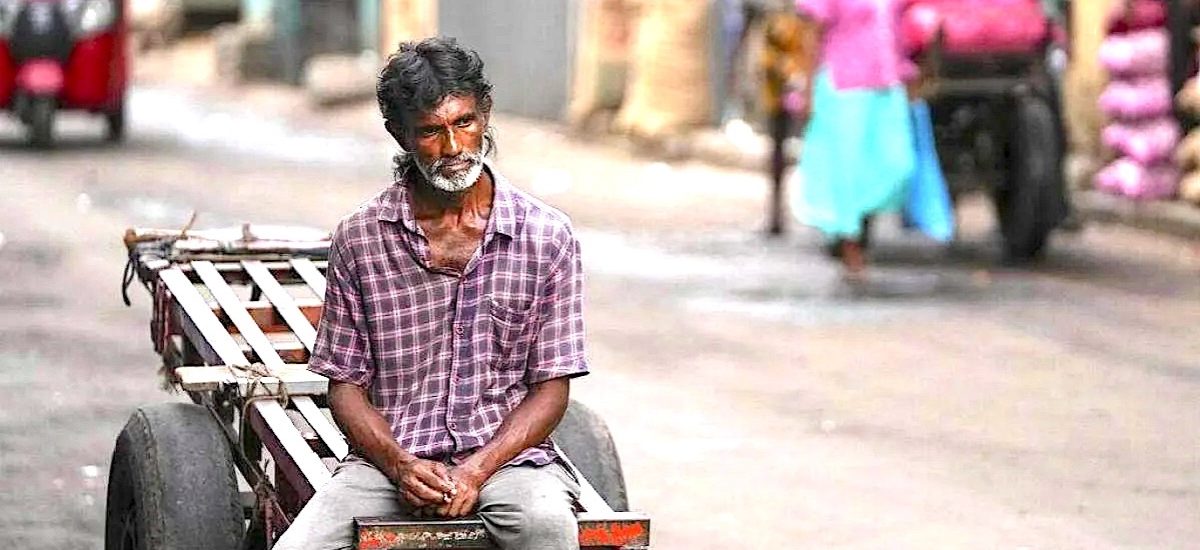Today is World Food Day
Photo courtesy of The New Indian Express
Since I live far away from Sri Lanka, digital media has been my main source of information about the country for years now. Reading articles online has given me an opportunity to update myself about the situation not only quickly but also with a variety of viewpoints, local as well as international. Out of the many items I came across in the past few days, three caught my attention probably because they all had some relevance to one topic – food, a topic that the whole world talks about.
The first one was a report published by the World Food Program (WFP). The second one was a news story in a local newspaper and the third one was a social media post.
The WFP’s report on the food crisis offered a grim but true picture of the current situation. It verifies what we already know about the inflation of food prices. According to the data, about 30% of the population is currently facing moderate to severe acute food insecurity. More than 60% are eating less or opted for cheaper, less nutritious food. Unfortunately, this situation will only worsen in the next four to five months if adequate external support is not provided. The WFP is already doing some programs to provide support to the most vulnerable families in the urban areas, especially the families with pregnant women. According to the report, it is aiming to increase the reach to 3.4 million people, the majority of whom are schoolchildren or pregnant and breastfeeding mothers and children under five, by the end of the year with a combination of food, cash and voucher assistance.
The second piece, a news story I read in a local newspaper, gives a practical feeling to the statistics laid out in the WFP report. The story is about a number of children who fainted during school activities. Although incidents like this have been happening for months, a member of parliament from the north central province talking about it publicly made it a headline. It is sad to note that stories about children fainting at schools due to a lack of food or children skipping schools for the same reason have become commonplace. This situation is not limited to the rural areas where the situation is dire but also happens in the urban areas. I heard about a well known school in Colombo stopping its morning assembly because of the increasing number of children fainting. Amid all this sadness, it is touching to hear about school teachers doing what they could to feed children in their schools. At some schools, it may be just one or two teachers bringing extra food to share with the children while at others it is happening in an organized and methodical way, even receiving external support.
The third one was a social media post that I saw a few days ago. If you read the previous paragraphs with sadness or anger, the third story will give you a good laugh, although in a miserable way. The post I saw was about some people announcing plans to set a Guinness World Record for having the longest buffet table. The event is to be held in Sri Lanka in February 2023. For a second I thought I was mistaken about the venue but I wasn’t; it is to be at a popular tourist beach in the Colombo suburbs. A country undergoing a severe food crisis may be able to set a new world record for having the longest lines to buy food and fuel but setting up a record breaking buffet table with food on it? Ironically, the proposed time coincides with the worst part of the food crisis predicted by the WFP. I do see a point in promoting country’s tourism profile by having internationally attractive events but from a moral or ethical standpoint, is this something we should go for at a time when two thirds of the country is starving?
I do not know if this Guinness Record buffet will happen or not; what I observed was a preliminary announcement on social media. But that is not the point. The hidden message reveals much more about our thinking as a society. The third story explains the mentality that caused us to witness the first two stories. It tells me why we are in this economic mess, that even after failing as a country we are still not capable of prioritizing the real needs of society. It explains why we were eager to spend borrowed money to erect South Asia’s tallest tower, the Lotus Tower, rather than investing that money in industries, education or healthcare. It also tells me why our country went from the second best economy in Asia in 1948 to a bankrupt economy while another tiny island, Singapore, from the same continent, only took half of that time to transition from a fishing village to a developed country. When a country lacks a national vision to recognize its priorities, it not only inhibits materialistic development but also hinders the moral development of its citizens. If a Guinness Record is really necessary, I really wish we had the courage to achieve it by setting up the largest community kitchen or the largest food bank. Such a move would have been a tremendous boost to the number of community kitchens that have sprung up in the country during these difficult days.
Each year the UN selects a theme to celebrate the World Food Day and this year’s theme is Leave No One Behind. Considering the food shortage and hunger the country is going through, I cannot think of a better time than now for Sri Lanka to rally around a theme like this. There are many individuals and organizations already doing their best to feed vulnerable communities. The WFP, teachers and the community kitchen programs provide the best examples. They do not expect any credit or publicity for their acts: they do their work simply because they want to leave no one behind. These are the real heroes we should celebrate on the World Food Day.


